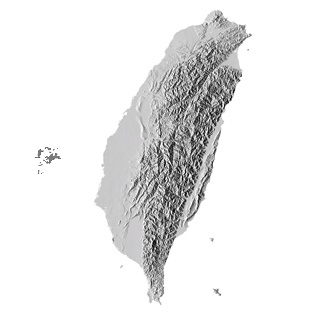
THE TAIWAN QUESTION
Here in the 2020’s, many people hope that Taiwan can return to the world stage and participate in a wide range of international organizations. However, the problem that frequently arises in making membership applications is a question of defining Taiwan’s true international legal status.
Overviewing the relevant history and legal details, some people claim that --
- Taiwan was returned to China after WWII, others say this is incorrect.
- Taiwan is already an independent sovereign nation, others deny this.
- Taiwan belongs to the ROC, and is already part of the ROC, however numerous people object to this.
- Taiwan belongs to the PRC, and should unify with the PRC, but many people express disagreement with this.
- The post-WWII treaties, and any other relevant specifications, should be thoroughly re-investigated and re-evaluated, so that a full clarification of Taiwan’s current legal status can be made.
It is true that in the last few decades, other strategies have been advanced for clarifying Taiwan’s place in the international community. Some of these activities have envisioned certain large-scale actions by the Taiwanese themselves, sometimes in coordination with other international agencies such as the United Nations, the World Health Assembly, World Trade Organization, Interpol, ICJ, APEC, or other governmental (or quasi-governmental) organizations in Asia, Europe, etc. Yet, to date, none of these strategies has produced any concrete results. As a result, the compilers of this website agree that in the current era, the last option (as given above) is probably the best one.
THE CLOSE OF THE NIXON-KISSINGER ERA
The new world order we speak of is the close of the Nixon-Kissinger era of peaceful engagement with China, and the recognition by the majority of world government officials, including elected representatives in the congresses of many countries, that over past decades the Chinese have systematically and deliberately violated many international norms and international laws. Among these have been: military aggression against neighboring countries, engagement in unfair trade practices, contempt for the principle of transparency, violation of their commitments to the World Trade Organization, repeated failures to honor other international agreements, the conduct of many varieties of commercial theft, including theft of intellectual property, economic sabotage, and other predatory economic practices, the falsification of all types of documentation, etc. . . . . while continuously lying about their intentions, etc.
Additionally, China continues to militarize the South China Sea, use its naval fleet to harass other countries, and to offer economic and diplomatic support to many countries which engage in human rights abuses. China also takes advantage of the fact that many countries have fully free and open information platforms, which China can use to spread misinformation and fake news.
The new world order fully recognizes that China is a country which essentially does not play according to international rules. Hence, in dealing with China, the countries of the world need to be more forceful and outspoken. Is this likely to happen anytime in the near future? Will such a stance be beneficial to Taiwan? The following overview gives some important nsight into answering these questions.
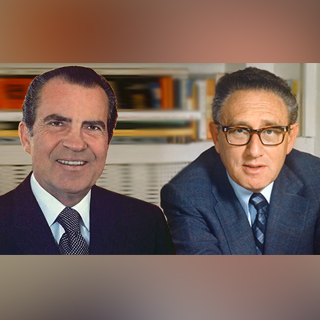
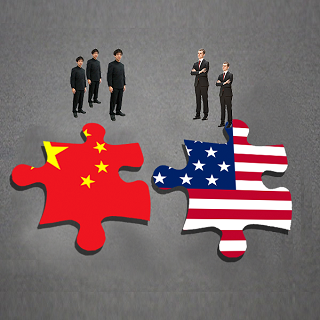
THE UNITED STATES' ENGAGEMENT WITH CHINA
The United States established formal diplomatic relations with the People’s Republic of China (PRC) on Jan. 1, 1979, and broke diplomatic relations with the Republic of China on Taiwan. A primarily motivation for this switch appears to have been the increasing economic importance of the PRC, which clearly showed a vast potential for economic growth, with a land area is over 270 times the size of Taiwan.
Such expectations have not gone unfulfilled. UN data from the last few years shows China to be the world's manufacturing powerhouse. Manufacturing is responsible for nearly 30% of the country's economic output. This is a big change from the early 1980s
In that era, and indeed proceeding into the 1990s and 2000s, government officials in the PRC gradually developed the belief that in order to lower costs, foreign companies would be eager to buy from China, and the by-product of this economic activity would be to pressure their government officials to strive to appease Beijing whenever any ideological conflicts arose. In other words, the overriding concern was making money. However, beginning with the COVID-19 outbreak in late 2019, this entire calculus began to change.
The Rise of President Xi: Additionally, with the ending of PRC presidential two-term limits in 2018, President Xi Jin-ping began to institute numerous reforms in China and to emphasize extremely aggressive nationalism. Instead of patiently waiting for Taiwan to see the logic of joining the emerging PRC Empire voluntarily, (which repeated polls in Taiwan see as increasingly unlikely), the PRC decided to undertake widespread shows of force, which has resulted in making enemies of most of its neighbors and other important world powers.
Therefore, in order to somehow persuade Taiwan of the "inevitability" of unification, the PRC, under the leadership of Xi and the CCP, is now engaging in military conflicts with India; continued forays to islands inside the claimed territorial waters of the Philippines, Japan, and Vietnam; repeated crackdowns fundamental freedoms in Hong Kong; expansion of concentration camps for Muslim minorities in western so-called "autonomous regions," economic and diplomatic arguments with South Korea, Canada, Australia, the UK, the USA, etc.
All of this is supposed to convince Taiwan that its leaders should set an early timetable for unification talks, whereas in truth it is having the opposite effect. Moreover, more and more world leaders are becoming increasingly supportive of Taiwan.
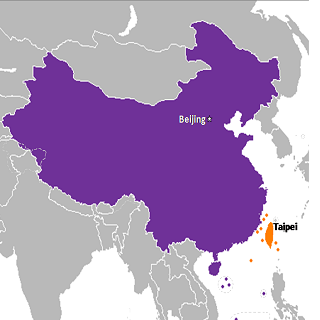
FUNDAMENTAL RATIONALE FOR UNIFICATION WITH THE PRC & REBUTTALS
In the PRC view, the fundamental rationale for why Taiwan should unify with China is very simple, "Taiwan has always belonged to China." PRC officials continually assert that Beijing stands by its "one China" principle, which states (according to their claim) that Taiwan is part of China.
Rebuttals: However, to those who study Chinese history, whether in Taiwan or other areas of the world, such a statement is always a source of great puzzlement. The following five points of rebuttal quickly come to mind.
- Formosa and the Pescadores (aka "Taiwan") had been ceded to Japan in the 1895 Treaty of Shimonoseki. Consequently, at the time of the founding of the ROC in 1912, Formosa and the Pescadores belonged to Japan. In the period before the Marco Polo Bridge Incident on July 7, 1937, this fact had already been confirmed by Chinese officials many times.
- In the first few years after the founding of the Chinese Communist Party (CCP) in July 1921, there were no official statements claiming that Taiwan belonged to China, or that Taiwan was an inseparable part of China, or asserting that Taiwan had been Chinese territory since ancient times. Later, at the CCP's Sixth National Congress, held in Moscow in 1928, the Chinese Communists made explicit statements regarding Taiwan's future political autonomy, acknowledging that the Taiwanese were ethnically separate from the Han.
- Beginning Oct. 10, 1935 in Taipei, there was a "Taiwan Exhibition," to commemorate the first forty years of Japanese rule over Taiwan. The KMT had been founded in Oct. 1919 in China, and Chen Yi, then serving as governor of Fujian Province, led a large KMT Chinese delegation to the Exhibition. He visited all areas of the exposition and took a tour showcasing important colonial construction projects, frequently congratulating the Japanese officials on their accomplishments. He also met with Taiwan's governor-general Nakagawa Kenzo and reached an agreement to undertake some economic cooperation. Hence it is clear that Chinese KMT officials fully recognized the legitimacy of Japanese rule over Taiwan.
- Chairman Mao and Peng Teh-huai manifestly dissociated Taiwan's political movement from China by incorporating it into the anti-imperialist revolution led by the Japanese Communist Party. According to the "Resolution on the Current Political Situation and the Party's Responsibility," passed at a meeting of the CCP Central Political Bureau on Dec. 25, 1935, and signed by Peng and Mao, Taiwanese were treated as a people whose natural political role was to fight alongside the "Japanese workers and peasants" in fighting Japanese imperialism and establishing a Soviet Japan.
- Chinese constitutional history begins with the government's proclamation of a draft constitution on May 5, 1936. This is known at the "Five-Five Constitution." Article 4 of this Constitution specifically lists territorial scope of the Republic of China, including the names of all provinces. However, Taiwan is not included.
It is worth mentioning that in the international order, the officials of all countries maintain a strict taboo against violating the "principle of estoppel." In other words, everyone must avoid arguing something or asserting something that contradicts what they previously said or agreed to. Given that the above five historical facts are the established positions of Chinese officials, so in the current era any such statement that "Taiwan has belonged to China since ancient times" should be discarded.
THE HISTORICAL BUILDING BLOCKS OF TAIWAN'S CURRENT LEGAL STATUS
As stated at the beginning of this Introduction, the compilers believe that the best and most non-controversial method for Taiwan to move forward in the post Nixon-Kissinger Era is to recognize that --
The post-WWII treaties, and any other relevant specifications, should be thoroughly re-investigated and re-evaluated, so that a full clarification of Taiwan’s current legal status can be made.
Let’s look at some preliminary research on this aspect. Going back approx. 130 years and beginning to examine the "building blocks" of Taiwan’s current legal status, the following sixteen items are frequently mentioned as having particular significance --
- Treaty of Shimonoseki, 1895
- China’s Declaration of War against Japan, Dec. 9, 1941
- Cairo Declaration, Dec. 1, 1943
- Potsdam Proclamation, July 26, 1945
- General Order No. 1, Sept. 2, 1945
- Japanese surrender documents, Sept. 2, 1945
- Japanese surrender ceremonies in Taipei, Oct. 25, 1945
- People’s Republic of China is founded, Oct. 1, 1949
- San Francisco Peace Treaty (SFPT), April 28, 1952
- Treaty of Taipei, Aug. 5, 1952
- USA-PRC First Communique, Feb. 28, 1972
- Japan–China Joint Communique, Sept. 29, 1972
- USA-PRC Second Communique, Jan. 1, 1979
- Taiwan Relations Act, Jan. 1, 1979
- USA-PRC Third Communique, Aug. 17, 1982
- Six Assurances, July 1982
But of course, it is easily seen that when any group of people get together to carefully examine the items on this list, disagreement will frequently arise as to which items are the most important. Additionally, some people will strenuously point out that in debating Taiwan current legal status, several items on this list are not authoritative and not determinative.
So, where do we go from here? Or is there any significance in moving forward? Can we come up with any solid research results which will be of immediate benefit to the Taiwan people? Let’s first recount a story from Europe.


THE SIGNIFICANCE OF RESIDENCY RIGHTS
There was a foreigner, named Evan, who had been living in a certain European country and had already obtained residency rights. Reputedly the following story occurred in the late 1980s. For Evan, the subject to be discussed is "the maintenance of an adequate financial income for personal survival."
In the country where he lived, some years previously the Legislature had first passed legislation regarding the residency rights of foreigners. However, almost a decade went by before the Legislature passed laws regarding the work rights of foreigners.
Unfortunately, when the work rights legislation came into force, Evan found that, according to his skill set, he now had residency rights but no work rights. Luckily, in his country where he was located, there was a convenient dispute settlement mechanism available at the central government level.
Evan collected all relevant paperwork, obtained the necessary legal counseling, and filed his appeal. He obtained a decision several months later.
In the decision, it was noted that residency rights were directly related to work rights. To put this in plain language, a person could not exercise residency rights if it was impossible to obtain three meals a day, plus money for clothing and other necessities. If he had residency rights in this country but was ineligible, physically-unable, or somehow disallowed from working, he should therefore automatically be included in a certain "barred from employment" or "employment disability" category, as recognized by the central government. In other words, Evan’s so-called "adequate financial income" needs should be fully assumed by some other government department.
Conclusion: Evan was entitled to receive a monthly stipend from the government.
Such a decision appears to rest on very strong logic. And such a decision has a direct relationship to Taiwan. For Taiwan, the subject to be discussed is "the maintenance of an adequate financial budget for national defense in order to assure continued survival."
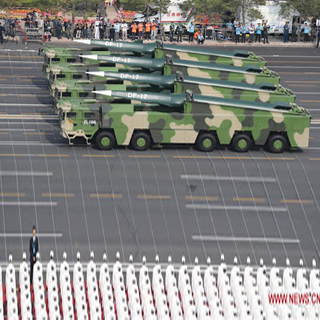
PRC AND ROC MILITARY AFFAIRS
In the PRC, military expenditure is projected to climb to 1.35 trillion yuan (US$ 208.03 billion) per year in the near future. This is 16 times larger than Taiwan’s current defense budget of NT$361.7 billion (US$ 12.80 billion). In 2021, military experts in Taiwan have been urging the ROC Ministry of National Defense to increase defense spending to at least NT$400 billion (US$ 14.15 billion) per year.
What is the purpose of defense spending? Of course, the leaders of every world country will agree, the purpose is to protect the "national sovereignty." Yet, if US government officials in the White House, Dept. of State, and other Executive Branch agencies continue to maintain that the Republic of China on Taiwan is a non-sovereign entity, then there is no sovereignty to protect. Such an analysis clearly points to the fact that US policies are contradictory.
The US Supreme Court also previously rendered a decision on this issue, holding that -- One of the attributes of a national sovereign government is the power to conscript soldiers.
Therefore, if the ROC on Taiwan is not a sovereign entity, the only possible conclusion is that under international rules and international norms, there is no legal basis for the ROC to maintain a Ministry of National Defense on Taiwanese soil, and to impose mandatory military conscription policies over the local Taiwan populace. In other words, Taiwan’s so-called "national defense" needs should be fully assumed by some other country.
Which country? A hint may be discovered by carefully examining the wording of the Taiwan Relations Act (TRA). The TRA stipulates that the United States should "provide" or "make available" military hardware to the Taiwan governing authorities. The TRA does not use the terminology of "sell to," or anything similar.
In summary, we can clearly see that this topic needs to be investigated in more detail. However, our continuing research efforts will be well served by first doing some basic review of related historical developments.
THE UNITED STATES' CONNECTION
Now let’s move forward in analyzing this "national defense" issue.
Overviewing Taiwan history, most people quickly conclude that Taiwan has never belonged to the United States. But what about jurisdiction? There is a difference between "ownership" and "jurisdiction." Additionally, there is a distinction between civil jurisdiction and military jurisdiction. In order to sort out all of the relevant details, we can explore a related example -- Japan.
The United States was the principal victor in WWII in the Pacific, and Japan was under military occupation by the Allies, led by the United States, from 1945 to late April 1952. That is military jurisdiction. (Some legal scholars even argue that the other Allies played a very minor role in the military occupation of Japan, and it was primarily a United States occupation.)
Taiwan formerly belonged to, and was part of, Japan. The question arises: Has Taiwan ever been under the "military jurisdiction of the United States?" That could include any control which is exercised directly, or exercised indirectly. Legally speaking, there are different aspects to military jurisdiction, so more specifically we should ask: Has Taiwan ever been under military occupation by the United States?
The reader of this website no doubt has some basic familiarity with Taiwan history. Additionally, having skimmed the content of this webpage up to this point, it might be very tempting to dismiss the assertion of Taiwan being under military occupation by the United States as nonsense.
Significantly, however, after the founding of the PRC, the officials of the Chinese Communist Party (CCP) did not consider this assertion to be nonsense.
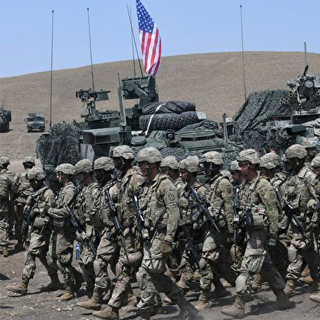
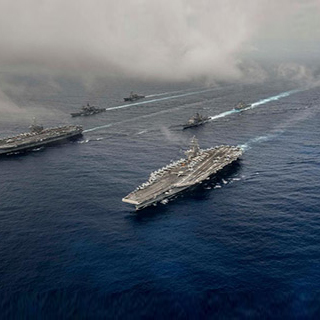
THE UNITED STATES' MILITARY OCCUPATION OF TAIWAN
Mr. Wu Hsiu-chuan, representative of the Central People’s Government of the People’s Republic of China (PRC), delivered a lengthy speech in the United Nations Security Council, regarding the armed aggression of the United States’ in its invasion and occupation of Taiwan. This speech was given on Nov. 28, 1950, nearly fourteen months after the founding of the PRC on Oct. 1, 1949.
Reference: Official Records of the Security Council,
Fifth Year, 527th Meeting, Nov. 28, 1950
Mr. Wu’s speech offered heavy criticism of the continued US military presence in and around Taiwan, which had been significantly increased beginning in June 1950 when President Truman sent the Seventh Fleet into the Taiwan Strait and boosted the number of military missions, liaison staff, command headquarters personnel, survey groups, and Thirteenth Air Force personnel on Taiwan itself. Additionally, Mr. Wu also criticized US government’s military assistance actions to Taiwan as far back as 1947.
Mr. Wu directly charged the United States government with invading and occupying Taiwan, and being in league with its puppet, the Chiang Kai-shek reactionary clique. He asserted that the United States Government had conducted illegal acts of armed aggression against Taiwan in order to consolidate its actual occupation of Taiwan, and prevent the Central People’s Government of the PRC from exercising sovereignty over Taiwan.
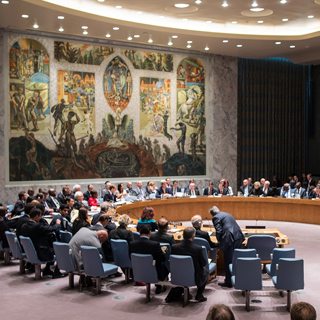
DRAFT RESOLUTION IN THE UN SECURITY COUNCIL
On Nov. 30, 1950, a draft resolution submitted by the representative of the Central People's Government of the People's Republic of China, and sponsored by the Union of Soviet Socialist Republics, was put to a vote. The text of that draft resolution read as follows:
"The Security Council,
"Recognizing that the invasion and occupation of Taiwan by the armed forces of the Government of the United States of America constitute open and direct aggression against Chinese territory,
"Recognizing that the armed aggression against Chinese territory and the armed intervention in Korea by the armed forces of the Government of the United States of America have shattered peace and security in Asia and violated the United Nations Charter and international agreements,
"Condemns the Government of the United States of America for its criminal acts of armed aggression against the Chinese territory of Taiwan, and armed intervention in Korea;
"Resolves to demand the complete withdrawal by the Government of the United States of America of its forces of armed aggression from Taiwan, in order that peace and security in the Pacific and in Asia may be ensured; and further
"Resolves to demand the withdrawal from Korea of the armed forces of the United States of America and all other countries and to leave the people of North and South Korea to settle the domestic affairs of Korea themselves, so that a peaceful solution of the Korean question may be achieved."
Reference: Official Records of the Security Council,
Fifth Year, 530th Meeting, Nov. 30, 1950
After failing to obtain enough votes in support, this draft resolution was rejected.
Of note is to point out that from the international legal standpoint, the contention that Taiwan was "Chinese territory" in late 1950 seems debatable. After all, Taiwan had been ceded to Japan by treaty in 1895, but up to late 1950, no treaty had ceded Taiwan back to China. (Again, when discussing this topic, it necessary to stress that there is a difference between "ownership" and "jurisdiction." Frankly speaking, many researchers in Taiwan history tend to totally ignore this dichotomy.)
Most important for our inquiries is to fully recognize that, as of late 1950, the PRC has made the charge that Taiwan is under military occupation by the United States. As a factual matter, this is worthy of further investigation. But, the members of the UN Security Council did not proceed with such an investigation. What they did do was hold a vote on whether or not to adopt the aforementioned draft resolution. The result of this vote was a decision of "No."
Was this vote a judgment on the truth or falsity of the PRC’s accusation that Taiwan was under military occupation by the United States? No, it was not. Perhaps the PRC’s accusation was true. Significantly, the Soviet delegation to the United Nations thought it was true. They sponsored the resolution.
SO-CALLED "NATIONAL DEFENSE"
Some related historical data may be useful for comparison. Upon examination, we find that the so-called "national defense" responsibility for both Cuba and the Ryukyu Island Group, during their period of US military occupation, was exercised by the United States exclusively. Moreover, there was no forced sale of military hardware to the Cuba governing authorities, or to the Ryukyu governing authorities, during their period under US military jurisdiction.
Regarding the situation of Taiwan in 1950, could it be true that the Chinese officials (and the Soviet officials) were aware of a certain type of legal reality that scholars, researchers, and political leaders in the rest of the world had completely overlooked? The answer to this question is extremely important.
Nearly a year and a half later, the San Francisco Peace Treaty came into force. US Secretary of State John Foster Dulles, co-author of the treaty, affirmed that the treaty ceded Taiwan to no one; that Japan "merely renounced sovereignty over Taiwan."
Dulles said that America "cannot, therefore, admit that the disposition of Taiwan is merely an internal problem of China."
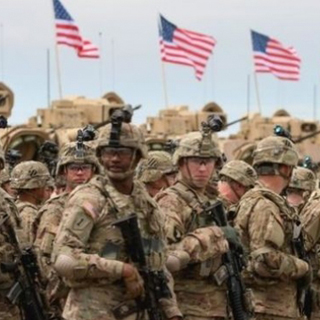

LOOKING BACK TO THE SAN FRANCISCO PEACE TREATY
With the coming into force of the 1952 SFPT, and no "final disposition" of Taiwan territory specified, many questions immediately arose. In Taiwan, among the most important were/are:
- Should the mass naturalization of native Taiwan persons as ROC citizens on Jan. 12, 1946, be rescinded?
- Should the Japanese property (both public and private) confiscated by the ROC authorities be returned to the "people of Taiwan"?
- Should the ROC regime continue to enforce military conscription policies in Taiwan?
- Should the CKS regime stay in Taiwan, or should it move elsewhere?
- Should the ROC Constitution continue to be used in Taiwan?
- Should the restriction on the formation of new political parties be lifted?
- Should there be a moratorium on the use of the word "China" in the naming of new foundations, organizations, associations, technical schools, high schools, colleges, universities?
- Should the ROC flag continue to fly? Should the ROC national emblem continue to be used?
- Should the Taiwan people be allowed to form their own government?
- Should Taiwan’s relationship to the United States be more precisely clarified?
Examination of the historical record shows that John Foster Dulles never promulgated any answers to questions of this sort. Additionally, it appears that other US officials were totally unable to offer any related insights or conclusions. Certainly there is no record of any US-sponsored meetings with representatives of the "Taiwan people" to discuss these matters.
Additionally, with the coming into force of the TRA in 1979, US government officials did not offer any answers to questions of this sort. We frequently hear that the US Senate has a "Taiwan Caucus" and the US House of Representatives has a "Taiwan Caucus." However, no procedures have ever been announced whereby the Taiwan people could submit questions and concerns regarding "human rights issues" to one of these Caucuses, and obtain some concrete resolution. Frankly speaking, people in Taiwan don't know what practical functions these caucuses have.
In some scholarly circles, the post-WWII treaty arrangements for Taiwan are frequently described as incomplete cession, non-normal transfer, partial reassignment, etc. or having caused Taiwan to become terra nullius or res derelicta. Others have stated that Taiwan simply does not fit in existing categories of territory as delineated under international law. However, our research shows that such conclusions are all incorrect.
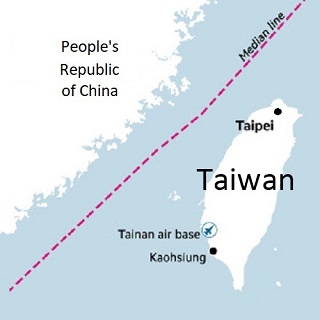
A FULL CLARIFICATION OF TAIWAN'S CURRENT LEGAL STATUS
In the above paragraphs, many questions have been raised, and many problems have been pointed out.
On the pages of this website, the compilers will use a three-tiered historical overview methodology to contrast, discuss, and dissect all of these matters in detail.
In order to accomplish this, the compilers have assembled three Flowcharts. These Flowcharts and their accompanying explanations deal with the historical situations of territories where --
the ownership was changed after war, but where the new "recipient country" was not specified in the post-war peace treaty.
We fully believe that this type of historical overview, along with the accompanying legal analysis, has never been presented before by any think-tanks in the United States, Europe, or Asia.
Although beginning as early as the mid-1950s in the United States, the House Committee on Foreign Affairs and the Senate Committee on Foreign Relations have held hearings where the subject of "Taiwan’s sovereignty" was discussed, none of the officials present have ever presented this type of in-depth analysis or research results either.
THE SAN FRANCISCO PEACE TREATY AND THE LAWS OF WAR
Article VI of the U.S. Constitution provides that:
The San Francisco Peace Treaty was written within the legal framework of the laws of war (often called the "customary laws of warfare"). An explanation of Taiwan’s legal status in the post-WWII era must thoroughly examine all related aspects of this framework.
A major impetus for the compilation of the three flowcharts (and in particular the Taiwan Flowchart) was the realization that very few (if any) U.S. government officials have a firm grasp of how the customary laws of warfare apply to historical situations of conquered territories where --
- the authority for conducting the surrender ceremonies was delegated to co-belligerents;
- wildly arrogant claims to "new ownership" of the territory were made immediately after the surrender ceremonies;
- confiscation of local property (both public and private) was begun without authorization;
- local civilians were arrested on questionable evidence and made subject to military trials;
- mass naturalization of the local populace was conducted without legal basis;
- martial law was declared based on the continuing state of "civil war" in Mainland Chinese provinces;
- a new Constitution and new criminal code were promulgated, with little to no input from the local populace;
- the post-war treaty confirmed a cession of the territory but failed to specify the new "recipient country";
- local officials exhibited a total lack of respect for the application of the Hague Conventions and Geneva Conventions;
- U.S. officials failed to provide all necessary supervision, guidance, support, and assistance; etc., etc.
After researching through large amounts of memoranda, reports, and other documentation issued by U.S. Executive Branch agencies (primarily the White House, National Security Council, Dept. of State, Dept. of Defense, Joint Chiefs of Staff, etc.) in the mid-1940s into the 1950s, up through the end of the 20th century, and even into the 21st century, it becomes increasingly apparent that there are no U.S. officials who are able to offer coherent explanations for (1) the legal status of Taiwan, and (2) the legal status of the Republic of China regime in Taiwan.
As a result, their decisions regarding the proper direction of "U.S. policy toward Taiwan" are based on an incomplete grasp of both the historical facts and the legal reality. Moreover, they have failed to recognize which provisions of the U.S. Constitution apply to the Taiwan people, and which provisions apply to Taiwan territory.
Hopefully, the compilation of the Three Flowcharts and all accompanying explanations will be an important first step in rectifying this regrettable situation.
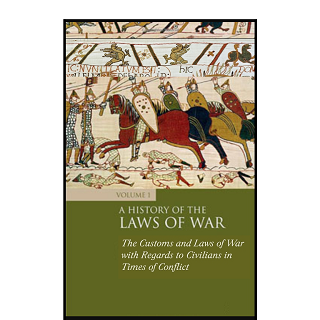

THE FLOWCHART ANALYSIS
Our Flowcharts proceed in a step by step fashion, proceeding through Cuba, the Ryukyus, and Taiwan.
After examining these Flowcharts, the reader can much better understand that in regard to war, the international legal framework for the disposition of territory after the close of hostilities is already well established. With the close of fighting in WWII in the Pacific, and later the coming into force of the peace treaty, Taiwan’s situation is not sui generis.
Comprehension of this aspect is greatly facilitated by studying the historical examples.
We urge all readers to begin with the easiest example -- Cuba.
